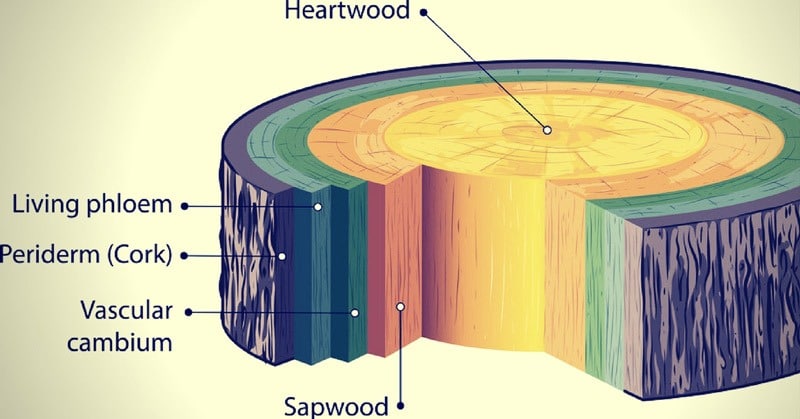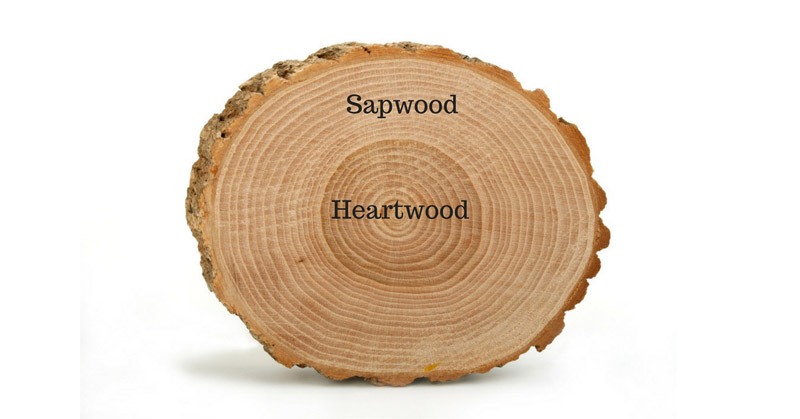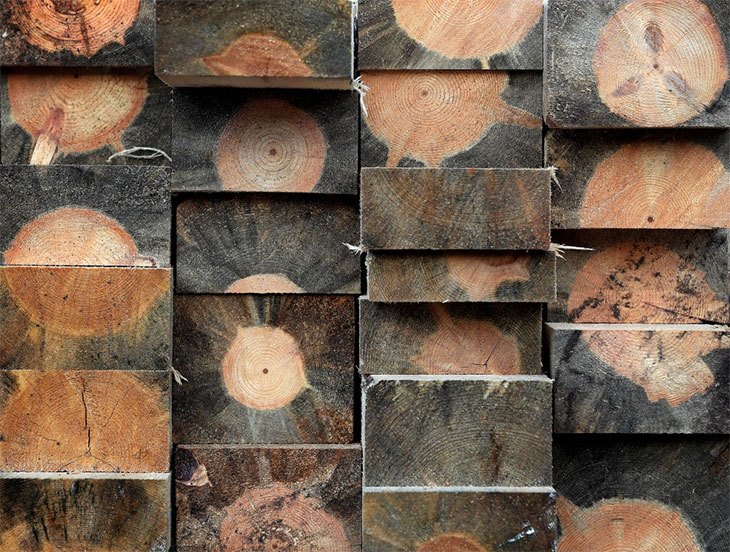Have you ever, at least as a child, used a trunk of a tree as a chair, maybe just to rest your aching feet during the stroll through the woods? Now, you are counting the growth rings to find out for how long the tree lived before it met its old nemesis, the axe.
But have you ever wondered why the inner part of the tree is darker than the outer part? And do you know why is heartwood darker in color than sapwood?
Let us start with the inner, darker part, also known as heartwood. But don't let the name deceive you - it is not a living part of a tree. Its main function is to provide a mechanical support to the tree.
As it grows and as the tree becomes older so does the heartwood become thicker. Heartwoods durability did not go unnoticed by skillful carpenters who use it almost exclusively for building furniture.
On the other hand, sapwood, or the lighter part of the tree, will not be readily used by any kind of craftsman. It contains a lot of moisture, which makes it susceptible to fungus and it doesn't look as rich and beautiful as heartwood.
But it still has a vital function in the tree. It transfers water and minerals from the roots to the every leaf which decorates the crown of the tree.
More...
Plant anatomy

Speaking in terms of plant anatomy, both heartwood and sapwood are made of same tissue known as xylem and all the wood is first formed as the sapwood. Xylem is one of the tissues used by the plant for transporting nutrients, the other being the phloem.
Two types of cells, distinctive by their shape, make xylem-tracheids and vessel elements.
But there are still some differences in the structure and function of these cells in both types of wood:
- Sapwood - by the time it is fully differentiated, both its tracheids and vessel elements lose their cytoplasm and is ready to transport water and inorganic ions. Its vessels do not contain tyloses.
- Heartwood is essentially retired sapwood, so its tracheid and vessel elements are also without cytoplasm, but those cells are additionally altered by mineral deposits such as oils and resins, which accounts to heartwoods function as mechanical support. Its vessels can form tyloses- balloon-like elements made in response to a decay initiated by microorganisms or fungi attack.
Read more —
Age of the tree
1. Sapwood
We already spoke how all the wood is first formed as the sapwood.
After some time, the cells of the inner layer of sapwood start to transform into the cells of the heartwood, whilst on the outer border of sapwood, new cells of sapwood are being made.
If the tree is very young, it has a thicker layer of sapwood which is necessary in order to support the growth, especially during the phase of rapid development.
As the tree gets older, the layer of sapwood is becoming thinner at the base of the tree and thicker in the newly formed branches, which makes sense, as the young sprouts require more water and minerals.

2. Heartwood
As for the heartwood, its thickness increases steadily throughout its life, but the number of the growth rings and their density changes depending not only on the age of the tree but also on the season.
During the spring and summer, growth rings are spaced wider which is correlated with extensive metabolic activity. In carpentry, this wood is known as earlywood. Cells of the earlywood have thin walls and large cavities.
Latewood, formed during the autumn and winter has densely positioned growth rings because the tree is in its resting phase. The cells have thicker walls and smaller cavities than those in the earlywood. Because of the smaller cavities, the latewood is darker, but also more durable than earlywood, which is why latewood is more appreciated and used.
In some species, such as Yew tree, not only we can't differentiate between earlywood and latewood, but the growth rings are almost invisible. In other species, such as Ash tree, rings are easily seen.
Chemical properties of sapwood and heartwood
The most important factor which influences the difference in color between sapwood and heartwood is the chemical composition of their cells.
We have said that both parts of the woods are made from the same tissue, xylem, but the cells are not equal in their chemical properties in the both parts of the wood.
Here are some of the most important:

- Water - Heartwood has very low content of water, mainly in its cell walls and cavities. Sapwood contains a lot of water, not only during the rapid development of the tree, when that water along with nutrients is transported to every part of that tree, but also a large portion of water is stored for whenever the anabolic activity of the tree increases and in the process of transpiration.
- Minerals, oils, and resins - Both parts contain these three types of nutrients, but the difference is in the chemical transformation of these substances during the aging of the sapwood tree. After the transformation and deposit of these substances, cells start to decay and, eventually, die thus forming the heartwood.
These chemically changed substances known as extractives are very rich in color and the main reason why the heartwood is, usually, much darker than the sapwood.
So why is the heartwood darker than the sapwood?
The main reasons are extractives, or as we got to know them chemically altered minerals, oils, and resins. Contributing factor is, of course, less water in the heartwood.
As we saw the age of the tree can incite difference in color not only between sapwood and heartwood, but also within different areas of the heartwood itself.
The growth rings, especially those densely packed during autumn and winter, can cause even greater color differences, within the heartwood, but also between heartwood and sapwood. Those little balloons in the heartwood called tyloses also make an interesting pattern, never to be found in the sapwood.
Now that you know why is heartwood darker in color than sapwood, we are sure you will make the right choice while selecting a wood type.
Best of luck with your next woodworking project!
